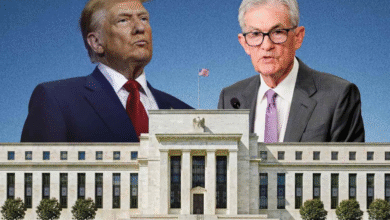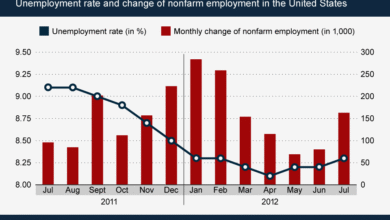Circle Stablecoin Japan: SBI Holdings Partnership Explained

Circle stablecoin Japan is poised to revolutionize the digital finance landscape in the country, following its recent approval by Japanese regulators. This landmark development, achieved through a strategic partnership with SBI Holdings, marks Circle as the pioneer stablecoin in Japan’s burgeoning cryptocurrency market. With the launch of USDC Japan, major exchanges such as SBI VC Trade are set to facilitate a new era of trading and payments. The groundwork laid by Circle in collaboration with local industry leaders has not only led to regulatory approval but also promises to enhance cross-border finance and digital commerce across the region. As Japan continues to embrace innovations in fintech, Circle’s efforts will drive further integration of digital assets into everyday financial transactions.
In an exciting shift for Japan’s financial sector, the introduction of Circle’s stablecoin, also known as USDC Japan, represents a significant breakthrough in the adoption of blockchain technology within the nation. By aligning with SBI Holdings, Circle is paving the way for the first approved stablecoin designed specifically for the Japanese market. This partnership not only accelerates the integration of digital currencies and banking but also fortifies Japan’s position in the global digital finance arena. As major trading platforms prepare to list this innovative asset, the implications for enhancing liquidity, facilitating cross-border exchanges, and promoting financial inclusion are profound. This development signals a new chapter where traditional finance meets cutting-edge technology, unlocking the potential for a more connected and efficient economic environment.
Circle’s Groundbreaking Stablecoin Approval in Japan
Circle has made history as the first and only stablecoin to secure approval for use in the Japanese market. This significant milestone is not merely a footnote but a vital development for both Circle and Japan’s position in digital finance. With the regulatory green light, Circle aims to revolutionize how financial transactions occur in Japan, allowing for a new wave of digital commerce, particularly through its local subsidiary, Circle Japan KK.
The implications of Circle’s stablecoin approval extend beyond trading cryptocurrencies; it represents a concerted effort to enhance payment systems, foreign exchange mechanisms, and cross-border financial transactions within Japan. This partnership with SBI Holdings will facilitate these advancements, making USDC readily available for various financial applications, thus broadening its utility and market adoption.
SBI Holdings: A Catalyst for USDC in Japan
SBI Holdings has emerged as a key player in the stablecoin landscape in Japan, actively supporting the launch and integration of USDC into various trading platforms. As a major financial conglomerate, SBI’s role enhances trust and accessibility for users looking to transact with digital assets. This collaboration not only spotlights SBI’s leadership in the financial industry but also underscores Japan’s proactive approach to digital assets.
The strategic alliance between Circle and SBI Holdings is pivotal for the successful introduction of USDC in Japan. With SBI VC Trade already gearing up to trade USDC, the groundwork is being laid for additional exchanges, like Binance Japan and Bitbank, to follow suit. This creates a robust ecosystem where stablecoins can thrive, enabling a future where digital currencies are seamlessly integrated into daily financial transactions.
The Future of Digital Finance with Stablecoins in Japan
The approval of Circle’s stablecoin ushers in a transformative phase for digital finance in Japan. With regulatory frameworks becoming clearer and more conducive for cryptocurrencies, Japan stands to benefit from increased adoption of stablecoins, which align with the country’s objective of fostering innovation in financial services. They can pave the way for new services that enhance trading efficiency, payment processing, and customer engagement.
As businesses and individuals alike start to leverage USDC, Japan could very well become a hub for stablecoin transactions in the Asia-Pacific region. The expected increase in cross-border finance activities, facilitated by a recognized and regulated stablecoin like USDC, means more robust economic interactions between Japan and other global markets. This development could reshape how digital assets are perceived and utilized within the country.
USDC: Enhancing Payment Solutions in Japan
Circle’s USDC aims to simplify the payment landscape, making transactions faster, more secure, and more efficient. By employing USDC, Japanese merchants can significantly reduce transaction times while also minimizing forex fees associated with traditional currency conversion processes. This transformation can elevate the overall consumer experience, fostering greater participation in the digital economy.
Moreover, USDC’s full backing by cash reserves and its 1:1 redemption for U.S. dollars assures users of its stability and reliability. This level of transparency is crucial for fostering trust among Japanese consumers and businesses aiming to venture into the world of digital finance. With regular auditing and reports, USDC positions itself as a safe harbor for users in a volatile market.
Circle’s Commitment to Financial Innovation in Japan
Circle’s engagement with Japan’s regulatory bodies over the past two years underscores its commitment to innovation within the financial sector. The company’s efforts to secure stablecoin approval reflect a deep understanding of the regulatory landscape and a strategic vision for integrating digital assets into the existing financial fabric.
With the backing of established partners like SBI Holdings, Circle is poised to not just introduce USDC but also to advocate for broader acceptance of stablecoins in the Japanese market. This collaborative spirit may drive further advancements in digital finance, leading to a thriving environment where traditional finance and blockchain technology coexist and enhance economic activity.
Stablecoin Impact on Financial Accessibility in Japan
The introduction of USDC through Circle’s partnership with SBI Holdings directly addresses financial accessibility in Japan. Many segments of the population can benefit from easier access to digital payment systems that enable instant transactions without the complications often associated with traditional banking. This broadens financial services for underbanked communities, allowing them to partake in Japan’s thriving economy.
Additionally, the advantages of stablecoin liquidity enable users to engage more readily in international markets, creating opportunities for both businesses and individuals to transact beyond borders. As digital finance continues to gain momentum, Japan’s adoption of a stablecoin will catalyze steps toward inclusive finance, ensuring everyone has access to advanced payment solutions.
The Role of Stablecoins in Japan’s Financial Ecosystem
Stablecoins like USDC play a pivotal role in the future of Japan’s financial ecosystem. As the demand for digital assets grows, their integration into various financial services will enhance transactional capabilities and streamline payment processes. The utilization of stablecoins can facilitate smoother operations between businesses that operate both domestically and internationally.
Circle’s successful approval signifies that Japan is ready to incorporate more diverse financial instruments, including stablecoins, into its financial system. This adaptive approach not only positions Japan competitively on a global scale but also encourages innovation in ways businesses and consumers engage with digital currencies.
Exploring Japan’s Digital Finance Landscape Post-USDC Launch
With the official launch of USDC in Japan, the landscape of digital finance is set for radical transformation. As more exchanges adopt USDC, its utility will expand beyond mere transactions, allowing for innovative financial products and services, such as lending, remittances, and investment vehicles that were previously challenging to implement.
The competitive edge that USDC offers, paired with Japan’s readiness to embrace such innovations, could lead to a ripple effect throughout Asia. Circle’s strategic approach, combined with SBI Holdings’ market influence, can catalyze developments leading to Japan becoming a central node in the global digital currency network.
Circle and Japan: Pioneering the Future of Stablecoins
Circle’s partnership with SBI Holdings is a milestone not only for the companies involved but also for Japan’s entry into the future of finance through stablecoins. This union represents a pivotal moment where innovation meets regulatory acceptance, providing a framework for how stablecoins can function within established markets.
As Japan looks to embrace digital currencies further, Circle’s proactive initiative may set the standard for other countries exploring similar pathways. The combined resources and expertise of both companies can facilitate the growth of a stablecoin economy that enhances transactions and investment opportunities, aligning perfectly with Japan’s progressive stance on fintech.
Frequently Asked Questions
What is Circle’s stablecoin approval in Japan?
Circle’s stablecoin, USDC, is the first and only stablecoin to receive approval for use in Japanese markets, allowing it to facilitate trading, payments, and cross-border financial operations in Japan.
How does SBI Holdings relate to Circle’s stablecoin expansion in Japan?
SBI Holdings is a strategic partner of Circle, assisting in the launch and distribution of USDC in Japan. Their collaboration aims to broaden USDC’s reach and enhance digital asset accessibility in the Japanese financial system.
What opportunities does Circle’s stablecoin Japan expansion unlock?
The approval of Circle’s USDC in Japan unlocks significant opportunities in trading digital assets, enhancing payments, improving cross-border finance and commerce, and supporting foreign exchange transactions.
When will USDC trading be available in Japan?
USDC trading in Japan, facilitated by SBI VC Trade, is set to launch on March 26, following regulatory approval from the Japan Financial Services Agency.
What role does Japan play in Circle’s global stablecoin strategy?
Japan serves as a key market in Circle’s global strategy for USDC, benefiting from the country’s advanced digital finance regulations and its commitment to blockchain technology.
What are the regulatory aspects of Circle’s stablecoin in Japan?
Circle’s USDC has obtained full regulatory clearance under Japan’s updated stablecoin framework, marking it as a fully compliant asset in the Japanese financial landscape.
How does USDC ensure stability and transparency in Japan?
USDC is fully backed by liquid cash and cash-equivalent reserves, allowing for a 1:1 redemption rate with U.S. dollars, and is supported by monthly third-party audits for transparency.
Why is Japan considered a leader in digital finance?
Japan is regarded as a leader in digital finance due to its proactive regulatory environment, clear rules for stablecoins, and a significant adoption of Web3 technology and blockchain innovations.
What are the expected benefits of Circle’s partnership with SBI Holdings for Japanese consumers?
The partnership is expected to enhance financial accessibility, drive digital asset innovation, and provide consumers with improved tools for payments and treasury operations in Japan.
What is the significance of Circle’s stablecoin launch events in Tokyo?
The launch events in Tokyo signify the beginning of USDC’s operational phase in Japan, highlighting the collaboration with local exchanges and marking a major milestone in the country’s digital finance landscape.
| Key Point | Details |
|---|---|
| First Stablecoin Approval | Circle becomes the first and only stablecoin approved for use in Japanese markets. |
| Partnership with SBI Holdings | Circle collaborates with SBI Holdings to launch operations and promote USDC trading in Japan. |
| Launch Date | USDC trading will begin on March 26, following regulatory approval. |
| Major Exchanges Involved | Exchanges like Binance Japan, Bitbank, and Bitflyer have committed to listing USDC. |
| Regulatory Framework | USDC is the first global dollar stablecoin with full regulatory clearance under Japan’s updated framework. |
| Industry Impact | Expected to unlock opportunities in trading, payments, cross-border finance, and commerce. |
Summary
Circle stablecoin Japan marks a significant development in the evolution of digital finance in the country. With its partnership with SBI Holdings and the launch of USDC trading, Circle is set to enhance the landscape for digital payments and blockchain-based finance in Japan. This initiative promises to not only bolster trading activities but also drive financial innovation and accessibility, aligning with Japan’s reputation as a leader in regulatory clarity and technological adoption.




